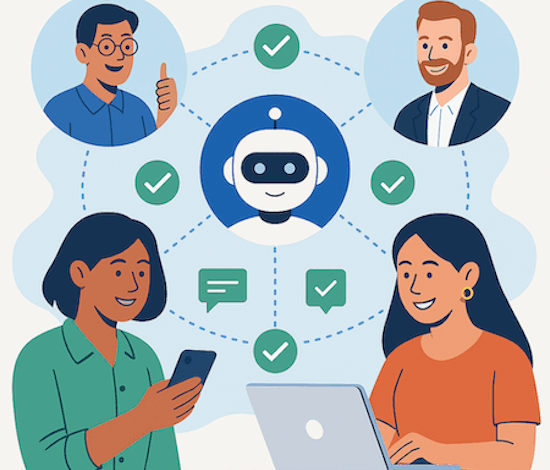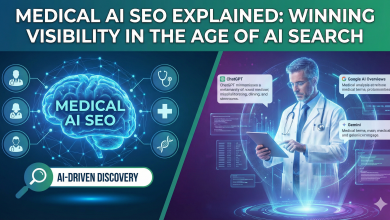
Artificial intelligence is redefining entire industries—yet networking remains stubbornly antiquated in its approach. While AI optimizes logistics, marketing, and customer service, most digital networking platforms still prioritize volume over value, pushing users toward a gamified chase for connections that rarely translate into meaningful outcomes.
Today’s dominant networking models reward activity over authenticity. The platforms designed to “connect” us often measure success in likes, clicks, and impressions, rather than in meaningful introductions or partnerships. This emphasis on scale has stripped away context and trust, leaving users drowning in cold outreach and irrelevant requests. For many business owners, what was once a human-driven process rooted in credibility has become an exercise in managing digital noise. The result? Wasted time, fractured relationships, and diminishing returns on effort.
This has led to what I call the networking paradox: we’re more “connected” than ever, but those connections often lack the trust and depth that make them truly valuable.
The reality is simple: networking is not a data problem—it’s a trust problem. Solving it requires rethinking how AI is applied, shifting from automation to amplification of authentic human relationships.
For small and midsize businesses, trusted relationships are often the single biggest growth driver. Referrals, introductions, and partnerships fuel economic opportunity. According to multiple studies, over 80% of small businesses report that referrals are their primary source of new customers. Despite this, most digital tools ignore this truth and force owners into models that favor transactional outreach over relationship building.
Yet most tools in the market today fail to unlock the full potential of second-degree networks—connections that exist within your extended circle, where trust can be inherited and credibility already exists. These relationships represent an untapped opportunity measured in trillions of dollars. But traditional CRMs and social networks aren’t built for this—they treat networking as transactional and optimize for outreach scale, not relationship depth.
AI can change that. But only if it’s deployed with intention. Too often, AI in networking has been reduced to glorified automation—sending more emails, generating more lists, and scaling up the very tactics that people already dislike. That’s not innovation; that’s digitized cold calling.
The question is: how do we design systems that surface these hidden connections in ways that respect context, build trust, and keep humans in control?
AI in networking should not be about blasting more messages or automating outreach. That approach only amplifies the noise problem. Instead, the future lies in relationship intelligence, where AI serves as a guide, helping users:
- Map trust dynamics based on real-world interactions—not just static profiles
- Detect intent shifts by analyzing behavioral signals, timing, and local context
- Deliver recommendations that are warm, contextual, and human-first—not robotic scripts
The goal isn’t to automate relationships—it’s to make the right ones easier to find and nurture.
To get there, the industry must align on three core design principles.
First, transparency and explainability: when an AI recommends an introduction or a follow-up, users need to know why. Providing context behind every suggestion fosters trust in both the system and the relationship-building process.
Second, ethical data stewardship: AI thrives on data, but trust starts with consent. Systems should rely on permissioned data, minimize unnecessary collection, and ensure users understand how their information is used.
Third, human-in-the-loop networking: networking is fundamentally human. AI should act as a compass, not a proxy. The role of technology is to reduce friction—not authenticity.
There are more than 30 million small businesses in North America alone, representing nearly half of U.S. GDP. Many are still struggling to adapt in a digital-first economy. If AI can help them access the value hidden in their own networks—referrals, partnerships, and collaborative opportunities—it could change growth trajectories and even reshape local economies.
Imagine a local graphic designer who, instead of cold-pitching 200 strangers, receives an AI-guided suggestion to connect with a marketing consultant who already trusts someone in their circle. That single introduction could lead to long-term work, partnerships, and mutual growth—without the friction and guesswork of traditional outreach.
The incumbents—social media platforms, CRMs, and sales automation tools—are not addressing this opportunity. They optimize for clicks and impressions, not referrals and trust. The next generation of AI-driven networking must do better.
The most powerful AI systems of the future won’t replace relationships—they’ll strengthen them. They’ll make introductions warmer, guidance smarter, and timing sharper. And they’ll do it while preserving the essential human element that makes networking work.
But this will only happen if we build AI responsibly. That means prioritizing trust signals over vanity metrics, empowering users with control and transparency, and designing systems that value quality over scale. It also means industry collaboration—technologists, business leaders, and policymakers working together to ensure that the future of AI in networking is human-centered and ethically grounded.
If we get this right, AI won’t just digitize networking—it will restore what made it valuable in the first place: trust.




